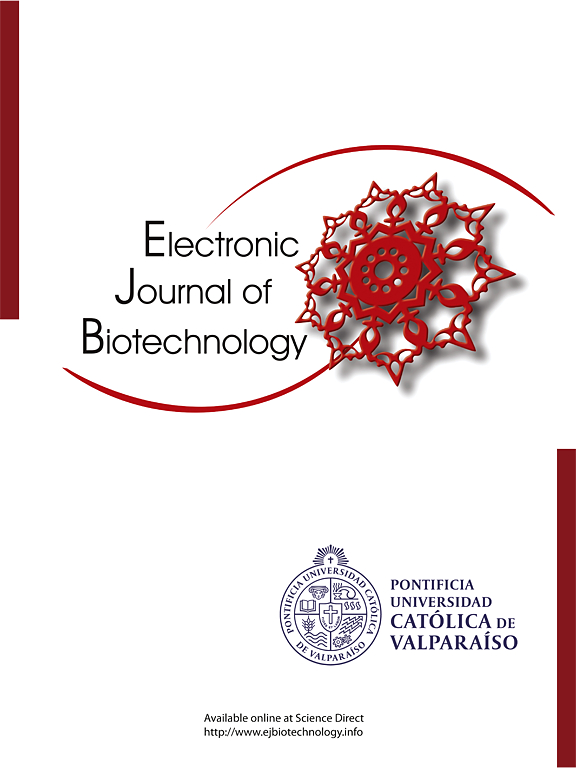Optimizing the process conditions for the biosorption of chromium (VI) by Bacillus subtilis in artificial wastewater
IF 2.5
4区 生物学
Q3 BIOTECHNOLOGY & APPLIED MICROBIOLOGY
引用次数: 0
Abstract
Background
The contamination by heavy metals, particularly hexavalent chromium Cr (VI), is a pressing environmental concern. Cr(VI) is highly toxic, non-biodegradable and carcinogenic. Traditional remediation methods are often costly, energy-intensive, or generate secondary waste. This study explores the optimal conditions for the bacterium Bacillus subtilis in reducing Cr(VI) from synthetic wastewater.
Results
The research employed batch experiments to simulate wastewater treatment. The removal of Cr(VI) was measured spectrophotometrically. The active functional groups were studied using Fourier Transform Infrared Spectroscopy that showed an incremental shift for alkyl halides (500.75 cm−1) and OH-groups (3347 cm−1) were observed. Scanning Electron Microscopy images demonstrated that the surface morphology of the biosorbent was more homogenous before than after adsorption. The biosorbent’s structure was confirmed by a prominent peak in X-ray Diffraction at 290.04°. The highest adsorption was observed at the adsorbent dose of 0.5 g/L, the contact time 60 min, pH 6 and temperature of 40°C. The thermodynamic parameters validated the process’s feasibility and spontaneity. Several models for biosorption kinetics and isotherm were tested. The pseudo-second-order was more suitable than the pseudo-first-order model. Langmuir isotherm model had the best fit compared to Freundlich, Dubinin–Radushkevich, and Temkin models.
Conclusions
B. subtilis appeared to be resistant to chromium and reduce Cr(VI) efficiently. This study shows the potential of B. subtilis as a viable bioremediation agent for Cr(VI) contamination in wastewater and should be studied further using real wastewater with different pollutants.
How to cite: Alsamhary KE. Optimizing the process conditions for the biosorption of chromium (VI) by Bacillus subtilis in artificial wastewater. Electron J Biotechnol 2025;76. https://doi.org/10.1016/j.ejbt.2025.03.005.

优化枯草芽孢杆菌对人工废水中六价铬的生物吸附工艺条件
重金属污染,特别是六价铬(ⅵ)的污染,是一个紧迫的环境问题。铬(VI)是剧毒、不可生物降解的致癌物。传统的补救方法往往是昂贵的,能源密集型的,或产生二次废物。本研究探讨了枯草芽孢杆菌(Bacillus subtilis)在合成废水中还原Cr(VI)的最佳条件。结果采用批量实验模拟废水处理过程。用分光光度法测定了Cr(VI)的去除率。利用傅里叶变换红外光谱对活性官能团进行了研究,发现烷基卤化物(500.75 cm−1)和oh -基团(3347 cm−1)发生了增量位移。扫描电镜图像表明,吸附前生物吸附剂的表面形貌比吸附后更为均匀。在290.04°处的x射线衍射峰证实了生物吸附剂的结构。吸附剂用量为0.5 g/L、接触时间为60 min、pH为6、温度为40℃时,吸附效果最佳。热力学参数验证了该工艺的可行性和自发性。测试了几种生物吸附动力学和等温线模型。拟二阶模型比拟一阶模型更合适。与Freundlich、Dubinin-Radushkevich和Temkin模型相比,Langmuir等温线模型的拟合效果最好。枯草芽孢杆菌对铬具有抗性,并能有效地还原Cr(VI)。本研究表明枯草芽孢杆菌作为一种可行的废水中Cr(VI)污染的生物修复剂的潜力,需要在不同污染物的真实废水中进行进一步的研究。引用方式:alsamhari KE。优化枯草芽孢杆菌对人工废水中六价铬的生物吸附工艺条件。中国生物医学工程学报(英文版);2009;16。https://doi.org/10.1016/j.ejbt.2025.03.005。
本文章由计算机程序翻译,如有差异,请以英文原文为准。
求助全文
约1分钟内获得全文
求助全文
来源期刊

Electronic Journal of Biotechnology
工程技术-生物工程与应用微生物
CiteScore
5.60
自引率
0.00%
发文量
50
审稿时长
2 months
期刊介绍:
Electronic Journal of Biotechnology is an international scientific electronic journal, which publishes papers from all areas related to Biotechnology. It covers from molecular biology and the chemistry of biological processes to aquatic and earth environmental aspects, computational applications, policy and ethical issues directly related to Biotechnology.
The journal provides an effective way to publish research and review articles and short communications, video material, animation sequences and 3D are also accepted to support and enhance articles. The articles will be examined by a scientific committee and anonymous evaluators and published every two months in HTML and PDF formats (January 15th , March 15th, May 15th, July 15th, September 15th, November 15th).
The following areas are covered in the Journal:
• Animal Biotechnology
• Biofilms
• Bioinformatics
• Biomedicine
• Biopolicies of International Cooperation
• Biosafety
• Biotechnology Industry
• Biotechnology of Human Disorders
• Chemical Engineering
• Environmental Biotechnology
• Food Biotechnology
• Marine Biotechnology
• Microbial Biotechnology
• Molecular Biology and Genetics
•Nanobiotechnology
• Omics
• Plant Biotechnology
• Process Biotechnology
• Process Chemistry and Technology
• Tissue Engineering
 求助内容:
求助内容: 应助结果提醒方式:
应助结果提醒方式:


